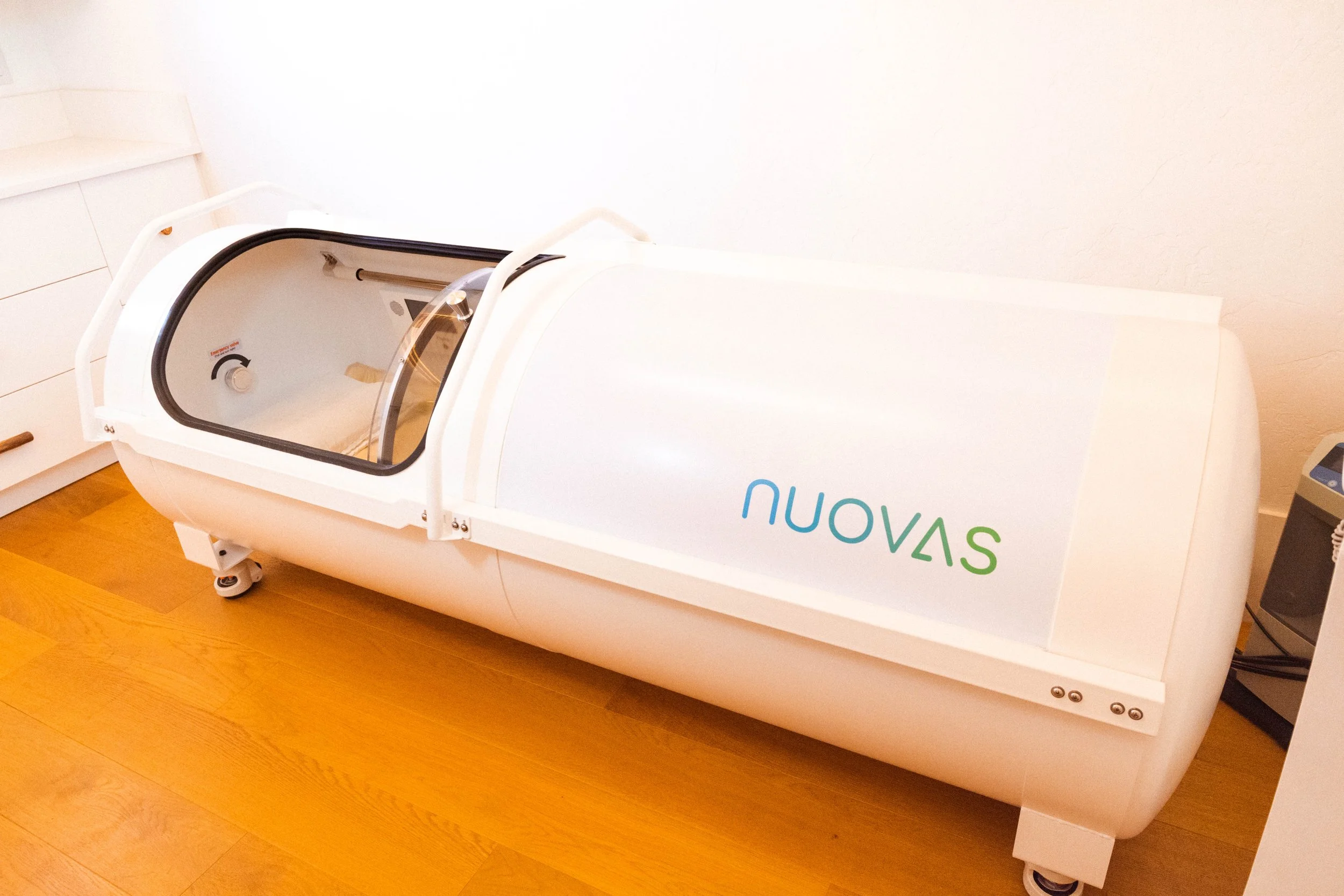What is HBOT and how can it help?
Our 2 new state of the art hyperbaric chambers have just arrived to Essential Medicine!
A hyperbaric chamber, also known as a hyperbaric oxygen therapy (HBOT) chamber, is a medical device used to treat a variety of conditions by exposing the patient to a high-pressure oxygen environment.
Hyperbaric chambers have been used for medical purposes since the 1930s, and today they are widely used in hospitals, clinics, and other medical settings. The most common use of hyperbaric chambers is to treat decompression sickness in divers, but they are also used to treat a range of other conditions. Among them are neurological damage, chronic wounds, post-operative recovery, and some types of infections.
The basic design of a hyperbaric chamber involves a sealed chamber that can be pressurized up to 2 atmospheres with air. Patients enter the chamber, acclimate to the increasing pressure, and then breathe in the pure oxygen, which helps to increase the amount of oxygen in their blood and tissues beyond their body’s usual self-limiting hemoglobin transport system. This increased oxygenation can help to promote intensive healing and reduce inflammation in the body. Hyperbaric chambers are generally considered safe, although there are some risks associated with their use.
The most common side effects of hyperbaric oxygen therapy include ear pain, sinus pain, and changes in vision. However, these side effects are usually temporary and go away once the treatment is completed.
Hyperbaric chambers are a valuable tool in the medical community for treating a variety of conditions. Whether you are a diver with decompression sickness or a patient with a chronic wound, hyperbaric oxygen therapy can help to promote healing and reduce inflammation in the body. If you are interested in learning more about hyperbaric oxygen therapy or think you may benefit from treatment, contact us today!
Other Conditions HBOT has been known to treat:
• Acute carbon monoxide intoxication
• Decompression illness
• Gas embolism
• Acute traumatic peripheral ischemia
• Crush injuries and suturing of severed limbs
• Progressive necrotizing infections
• Acute peripheral arterial insufficiency
• Preparation and preservation of compromised skin grafts
• Gas gangrene
• Diabetic wounds of the lower extremities if all of these apply:
1. You have Type 1 or Type 2 diabetes and have a lower extremity wound that’s due to diabetes.
2. You have a wound classified as Wagner grade III or higher.
3. You’ve failed an adequate course of standard wound therapy
• Acute Acoustic Trauma
• Acute and Chronic Anemia
• Acute and Chronic Arterial Insufficiency
• Alzheimer’s Disease
• Autism
• Brain Injury
• Bells Palsy
• Candidas and Fungal Infections
• Cerebral edema
• Cerebral Palsy
• Chemical Poisoning
• Closed head injury
• Colitis
• Crohn’s Disease
• Compartmental Syndrome
• Cosmetic Surgery (before and after)
• Fibromyalgia
• Flesh Eating Bacteria
• Fracture Repair
• Gastric and Doudenal Ulcers
• Headaches, Cluster
• Heart Attack
• Hypoxic Birth Disorders
• Infections• Lupus
• Lyme Disease
• Macular Degeneration
• Migraine
• Multiple Sclerosis
• Musculoskeletal injuries
• Near drowning
• Near hanging
• Nerve injuries
• Neurovascular compression
• Oral disease
• Parkinson’s disease
• Peripheral nerve injury
• Peripheral Vascular Disorders
• Reflex Sympathetic Dystrophy (RSD)
• Rheumatoid Arthritis
• Sacroiliac Syndrome
• Scelodrema
• Shingles
• Silcone Induced Disorders
• Spinal Cord injury
• Spider Bite
• Sports Injury
• Stroke
• Surgery recovery
• Tendon injuries
